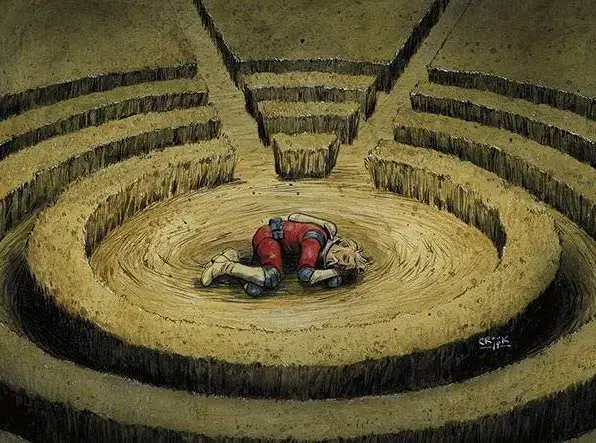Colonel Weird: Cosmagog has an elephant in the room, and that elephant is named Strange Adventures. Colonel Weird, as a character, is very much a play on the 1950s space heroes from DC – Space Ranger, Tommy Tomorrow, Star Hawkins, the Star Rovers, and most prominently Adam Strange. That’s true of all the Black Hammer books, really: they’re all conscious riffs on comics tropes. Black Hammer ’45 are the Blackhawks. Doctor Star was Starman. Skulldigger and Skeleton Boy is The Punisher. Barbalien is the Martian Manhunter. Quantum Age is unabashedly just the Legion of Super-Heroes. So it’s hard to read Colonel Weird: Cosmagog without thinking of the other revisionist take on ’50s space hero tropes coming from an all-star team of creators.
It’s lucky, then, that Colonel Weird: Cosmagog is great.
(As an aside, it’s a fact that all of the Black Hammer books are great. Jeff Lemire has been on fire, and anyone skipping those is missing some absolutely all-star comic books.)
Colonel Weird: Cosmagog #2 follows the titular space explorer as he continues to bounce through his own timeline. In parts, he is a bullied child in the unspecified past, growing up with an overbearing father, and not quite fitting in with the other children – the man he will become, the time-hopping hero, present in his subconscious. In other parts, he is the brash, macho space explorer of the vein of Adam Strange and Space Ranger, bravely jumping off into the unknown, firing ray guns at space monsters, and wooing his attractive young mission control handler. And at the end, he is at the very end of all things, in the precipitating moment behind all of Black Hammer, as Darkseid Anti-God and his Parademons Hellamentals descend on Spiral City.
But with all of that, it’s really an exploration of Weird’s character: how can his personality exist, while he doesn’t exist linearly?
But what’s honestly a bigger star here is Tyler Crook’s art. I’m not an artist, and I can’t confirm this, but it looks like the book wasn’t so much as inked and colored as it was painted in watercolors. The colors are washed out, and while the line work is solid and well done, the light, almost overlapping colors lends the figures a sense of depth, without needing heaving inking.
And this washing out of the colors by it being a watercolor – or at least watercolor reminiscent – lends the book a dreamlike quality that really emphasizes the sense of surreality that the narrative is trying to encourage. Crook is really the impetus really making this book as good as it is. A more photorealistic artist would have made a much worse comic.
Black Hammer has had a great level of baseline quality, and Colonel Weird: Cosmagog #2 more then lives up to that standard.
Join the AIPT Patreon
Want to take our relationship to the next level? Become a patron today to gain access to exclusive perks, such as:
- ❌ Remove all ads on the website
- 💬 Join our Discord community, where we chat about the latest news and releases from everything we cover on AIPT
- 📗 Access to our monthly book club
- 📦 Get a physical trade paperback shipped to you every month
- 💥 And more!














